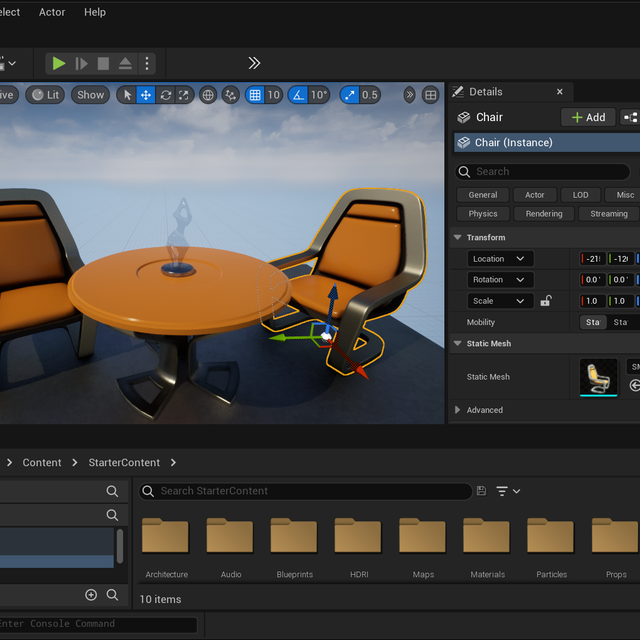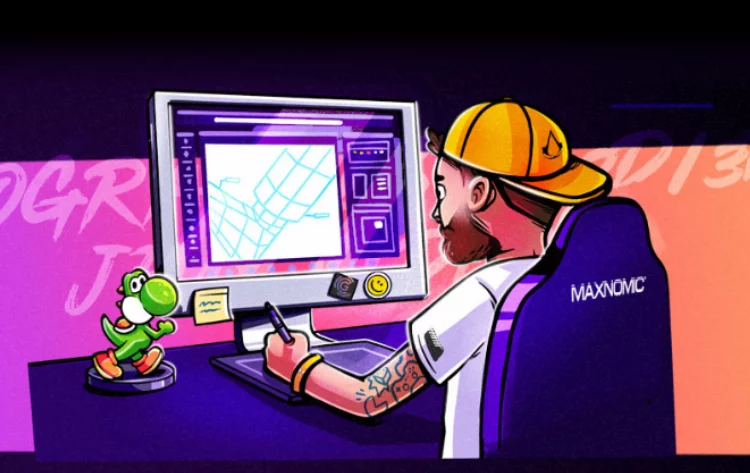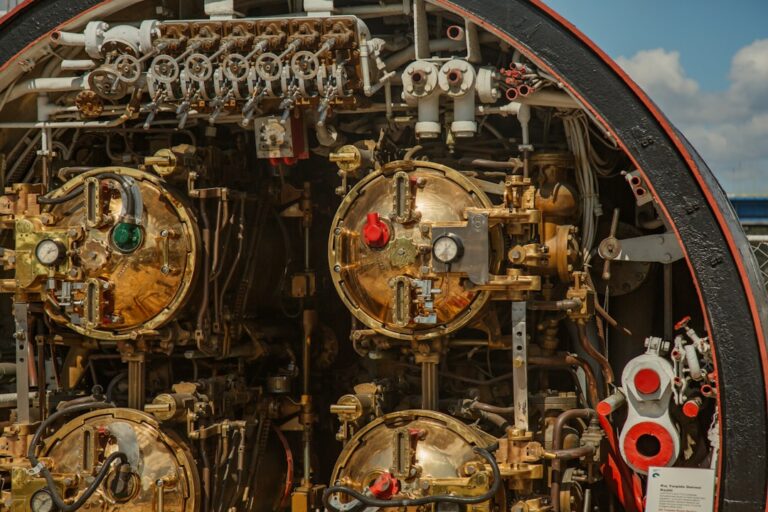The Engine Upgrade Revolution: How Unreal Engine 5.5 is Redefining Live Service Gaming
In the ever-accelerating landscape of the gaming industry, stagnation is the enemy of longevity. For live service titles—games designed to be played for years, not months—the underlying technology is as critical as the content itself. This is where the world of game development sees some of its most audacious and high-stakes maneuvers: the mid-lifecycle engine upgrade. The recent advancements in Epic Games’ flagship engine, culminating in Unreal Engine 5.5, have created a powerful incentive for developers to undertake this monumental task. Moving a complex, established game with a dedicated player base from an older engine version to the cutting edge is not merely a fresh coat of paint; it’s a foundational overhaul designed to future-proof the experience for the next decade. This article delves into the technical realities, strategic motivations, and tangible player benefits of migrating a live service game to Unreal Engine 5.5, exploring why this challenging journey is becoming an essential step for success in modern PC gaming and console gaming.
Why Upgrade? The Strategic Imperative Behind Engine Migration
The decision to upgrade a game engine mid-development or post-launch is one of the most significant a studio can make. It’s a resource-intensive process fraught with risk, but the potential rewards are immense, touching every aspect of the game from visual fidelity to long-term viability in a competitive market that includes everything from AAA games to innovative indie games.
Future-Proofing and Competitive Longevity
For a game intended to thrive for years, especially in the realm of competitive gaming and esports, technological relevancy is paramount. An older engine can become a bottleneck, limiting a game’s ability to leverage new gaming hardware. Upgrading to Unreal Engine 5.5 ensures that a title can take full advantage of the latest graphics cards, multi-core CPUs, and the advanced architecture of modern consoles. This is a critical consideration for developers targeting platforms discussed in PlayStation News and Xbox News. By aligning with the latest tech, developers ensure their game won’t just run on future hardware, but will be able to truly shine, maintaining a competitive edge against newer titles in genres like Battle Royale and MMORPG News. It’s a strategic move to prevent the game from feeling dated and to retain a player base that expects continuous improvement.
Accessing a New Arsenal of Creative and Technical Tools
Unreal Engine 5 introduced a suite of transformative technologies that have fundamentally changed the approach to game design. The two most prominent are Nanite and Lumen. Nanite is a virtualized micropolygon geometry system that allows developers to use film-quality source art—composed of millions or even billions of polygons—directly in-engine without the traditional performance trade-offs of polygon budgets and manual Level of Detail (LOD) creation. For players, this means incredibly detailed environments and objects with virtually no pop-in. Lumen is a fully dynamic global illumination and reflections system. It reacts in real-time to changes in lighting and geometry, creating more realistic and immersive scenes. For an FPS game, this could mean light realistically bouncing through a shattered window, or in an RPG game, a torch casting dynamic, flickering shadows deep within a cave. These tools, further refined in UE 5.5, empower developers to build worlds that were previously impossible to render in real-time, pushing the boundaries of visual storytelling.
Streamlining Development Workflows
Beyond the headline features, newer versions of Unreal Engine bring significant quality-of-life improvements for development teams. UE 5.5 continues to enhance animation toolsets (like the Control Rig and Motion Matching), physics systems (Chaos Physics), and world-building tools. These advancements can dramatically speed up content creation, allowing teams to build more ambitious updates and expansions more efficiently. For the gaming community, this translates to a more consistent and robust pipeline of new content, keeping the game fresh and engaging. This efficiency is a key topic in both Unreal Engine News and its competitor, Unity News, as engines vie for developer loyalty by promising smoother, faster workflows.

The Herculean Task: Deconstructing the Engine Upgrade Process
While the benefits are clear, the process of upgrading a live game is a technical gauntlet. It is far more complex than simply downloading a new software version. It requires a meticulous, multi-stage effort from every department of a development studio, from programming to art and quality assurance.
Codebase Migration and Refactoring
The core of the upgrade process involves migrating the game’s entire codebase. This is a painstaking task where engineers must comb through millions of lines of custom C++ code and Blueprints to ensure compatibility with the new engine version. APIs (Application Programming Interfaces) often change between major engine releases; functions that were central to the old version might be deprecated, renamed, or replaced entirely. This requires significant refactoring—restructuring existing code without changing its external behavior. A common pitfall is underestimating this phase, which can lead to unforeseen bugs and significant delays in game releases. Developers must essentially re-validate every single gameplay system, from player movement to weapon mechanics, to ensure it functions as intended in the new engine environment.
Asset and Content Pipeline Overhaul
Every visual and audio asset in the game must be audited and, in many cases, converted or recreated. To leverage a feature like Nanite, for example, existing 3D models (static meshes) need to be re-processed and re-imported. Materials and shaders often need to be completely rebuilt to work correctly with Lumen’s dynamic lighting model. This process extends to particle effects, character animations, and user interface elements. A real-world scenario involves a studio writing custom scripts to batch-process thousands of assets, but this automated process still requires extensive manual verification to catch visual artifacts or incorrect behaviors. This asset overhaul is crucial for ensuring the game not only runs but also visually benefits from the new engine’s capabilities on high-end gaming monitors and gaming PCs.
Performance Profiling and Exhaustive QA
Introducing powerful new features like Lumen can create entirely new performance challenges. The final, and arguably most critical, stage is a deep and prolonged period of testing and optimization. The quality assurance (QA) team must test the game across a wide matrix of gaming hardware, from minimum-spec machines to high-end gaming laptops, as well as on all target consoles. They hunt for new bugs, graphical glitches, physics anomalies, and performance regressions. Developers use profiling tools to identify bottlenecks—is the CPU or the GPU the limiting factor? Is a specific shader causing a massive frame drop? This iterative cycle of testing, profiling, and fixing is essential to deliver a stable and polished experience. Rushing this phase can result in a disastrous launch that damages the game’s reputation within its dedicated gaming community.
The Payoff: What an Engine Upgrade Means for Players and the Industry
After months or even years of intense development work, the fruits of an engine upgrade become tangible for players. The impact is felt not just in the visuals, but in the game’s performance, stability, and potential for future growth.

A New Era of Visual Fidelity and Immersion
The most immediate and obvious benefit for players is a dramatic leap in visual quality. In a tactical shooter, this translates to hyper-realistic environments where light and shadow play a crucial gameplay role. Foliage is denser, textures are sharper, and explosions cast dynamic light that illuminates the battlefield. For open-world games, it means breathtaking vistas with incredible draw distances and intricately detailed characters that enhance the narrative experience. This heightened immersion is a game-changer, making virtual worlds feel more alive and reactive than ever before. This visual boost also enhances the spectator experience, a vital component for titles featured in Esports News and on platforms like Twitch, as seen in the latest Twitch News.
Performance and Scalability Enhancements
While new graphical features can be demanding, modern engines like UE5.5 also bring sophisticated optimization tools. Technologies like Temporal Super Resolution (TSR) allow the game to render at a lower internal resolution and then intelligently upscale the image to the target resolution, providing a significant performance boost with minimal loss in visual quality. This means players with mid-range gaming hardware can achieve higher frame rates, while those with top-tier systems can push resolutions and settings even further. This scalability is also vital for the burgeoning cloud gaming market, where efficiency on server hardware is key. A well-optimized game can provide a smoother, more responsive experience for everyone, a crucial factor in fast-paced genres like MOBA games or those covered in Valorant News and Counter-Strike News.
Paving the Way for Future Content and Modding
An upgraded engine is a new foundation upon which developers can build more ambitious content. The streamlined workflows and expanded feature set allow for the creation of larger, more complex expansions and updates. Furthermore, it can revitalize a game’s modding scene. When developers provide updated tools, the game mods community is empowered to create new content that takes full advantage of the engine’s capabilities. This symbiotic relationship, often highlighted in Steam News for games with strong Workshop integration, extends a game’s life and fosters a deeply engaged community, ensuring the gaming culture around the title continues to thrive.
Navigating the Upgrade: Tips, Considerations, and the Road Ahead
The trend of mid-lifecycle engine upgrades is here to stay. As technology evolves, developers and players alike must adapt to this new paradigm of continuous improvement for live service games.
For Developers: Planning is Paramount
A successful engine migration hinges on meticulous planning and transparent communication. A key best practice is to conduct a thorough technical audit and create a small-scale prototype or “test branch” to identify the biggest hurdles early on. This allows the team to estimate timelines and resource needs more accurately. It is also crucial to manage the expectations of the gaming community by being open about the process, the challenges, and the long-term benefits. As seen with major titles discussed in Fortnite News or Apex Legends News, a well-informed community is often a patient and supportive one.
For Players: Patience and Hardware Awareness
For players, it’s important to understand that such a massive update may initially introduce new bugs. Participating in public test servers is a great way to help the developers and get an early look at the changes. Additionally, a significant visual upgrade may change the game’s performance profile. Players should be prepared to update their graphics card drivers and potentially tweak their in-game settings to find the optimal balance of performance and quality for their specific gaming tech. This also includes ensuring peripherals, from gaming mice and gaming keyboards to more specialized game controllers like racing wheels or flight sticks, remain fully compatible.
Conclusion: Building for the Next Generation of Play
Upgrading a beloved, live-service game to a new powerhouse engine like Unreal Engine 5.5 is a testament to a developer’s commitment to its product and its community. It is a monumental undertaking, a journey filled with immense technical challenges, but one that is ultimately necessary for survival and success in the modern gaming industry. The payoff is a game that is not only visually stunning but also technologically prepared for the future of video games. By embracing this evolution, developers can deliver richer, more immersive, and more stable experiences, ensuring their creations can captivate players for many years to come. This forward-thinking approach is what continues to push the boundaries of interactive entertainment, solidifying the foundation for the next generation of digital worlds and the communities that inhabit them.










